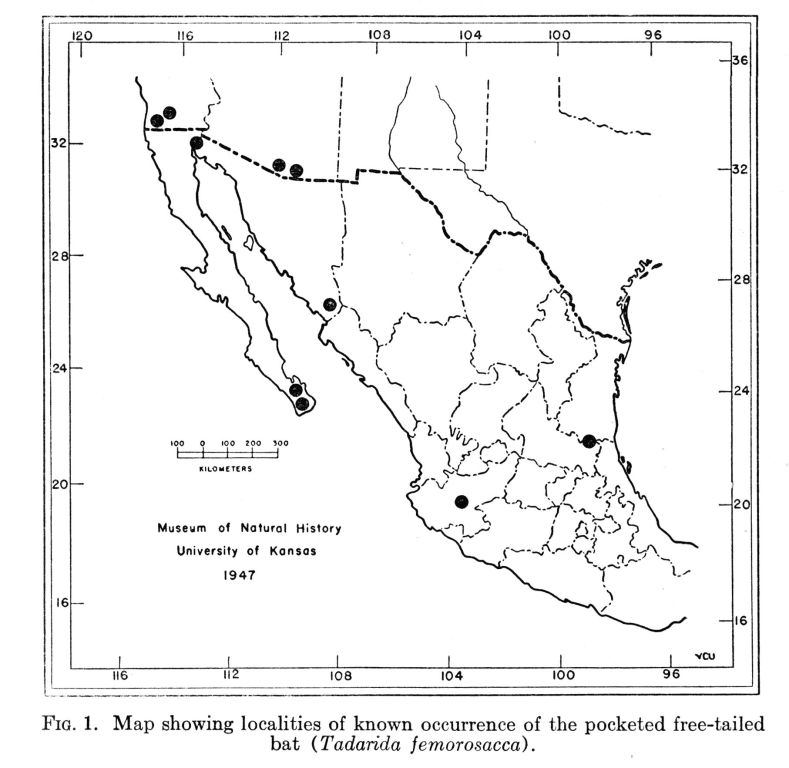(245)
Tadarida femorosacca (Merriam)
in Tamaulipas, Mexico
BY
WALTER W. DALQUEST and E. RAYMOND HALL
University of Kansas Publications
Museum of Natural History
Volume 1, No. 13, pp. 245-248
December 10, 1947
UNIVERSITY OF KANSAS
LAWRENCE
1947
(246)
University of Kansas Publications, Museum of Natural History
Editors: E. Raymond Hall, Chairman, H. H. Lane, Edward H. Taylor
Volume 1, No. 13, pp. 245-248
December 10, 1947
University of Kansas
Lawrence, Kansas
PRINTED BY
FERD VOILAND, JR., STATE PRINTER
TOPEKA, KANSAS
1947
22-1401
(247)
Tadarida femorosacca (Merriam) In Tamaulipas,
Mexico
By
WALTER W. DALQUEST AND E. RAYMOND HALL
 Fig. 1. Map showing localities of known occurrence of the pocketed free-tailedbat (Tadarida femorosacca).
Fig. 1. Map showing localities of known occurrence of the pocketed free-tailedbat (Tadarida femorosacca).On January 23, 1946, two pocketed free-tailed bats (Tadaridafemorosacca, Catalogue nos. 17852 and 17853) were obtained in alarge cave 10 kilometers north-northeast of the village of AntiguoMorelos, in the state of Tamaulipas, Mexico. This extends theknown range of this species to the Atlantic Slope and more than300 miles to the northeast of Zacoalco, Jalisco, the only locality incentral Mexico from which the species was previously known (seeShamel, H. H., Proc. U. S. Nat. Mus., vol. 78, art. 19, p. 13, 1931).The total length of the skull (18 mm.) and the basal length (15.0,(248)15.2) are less than recorded by Shamel (op. cit.) for any one of theeight specimens studied by him. Otherwise our two specimens answerthe description of femorosacca. They were found lying on thefloor of the cave. One was dead and the other alive but incapableof flight. Shooting into the cracks of the roof of the cave morethan a hundred feet high failed to dislodge other bats but stimulateda volume of squeaking of bats which indicated that thousandsof individuals, possibly of this species, were ensconsed there. Thecave had long been used by bats as attested by the large deposit ofguano, much of which had been removed for fertilizer.
Transmitted October 20, 1947.